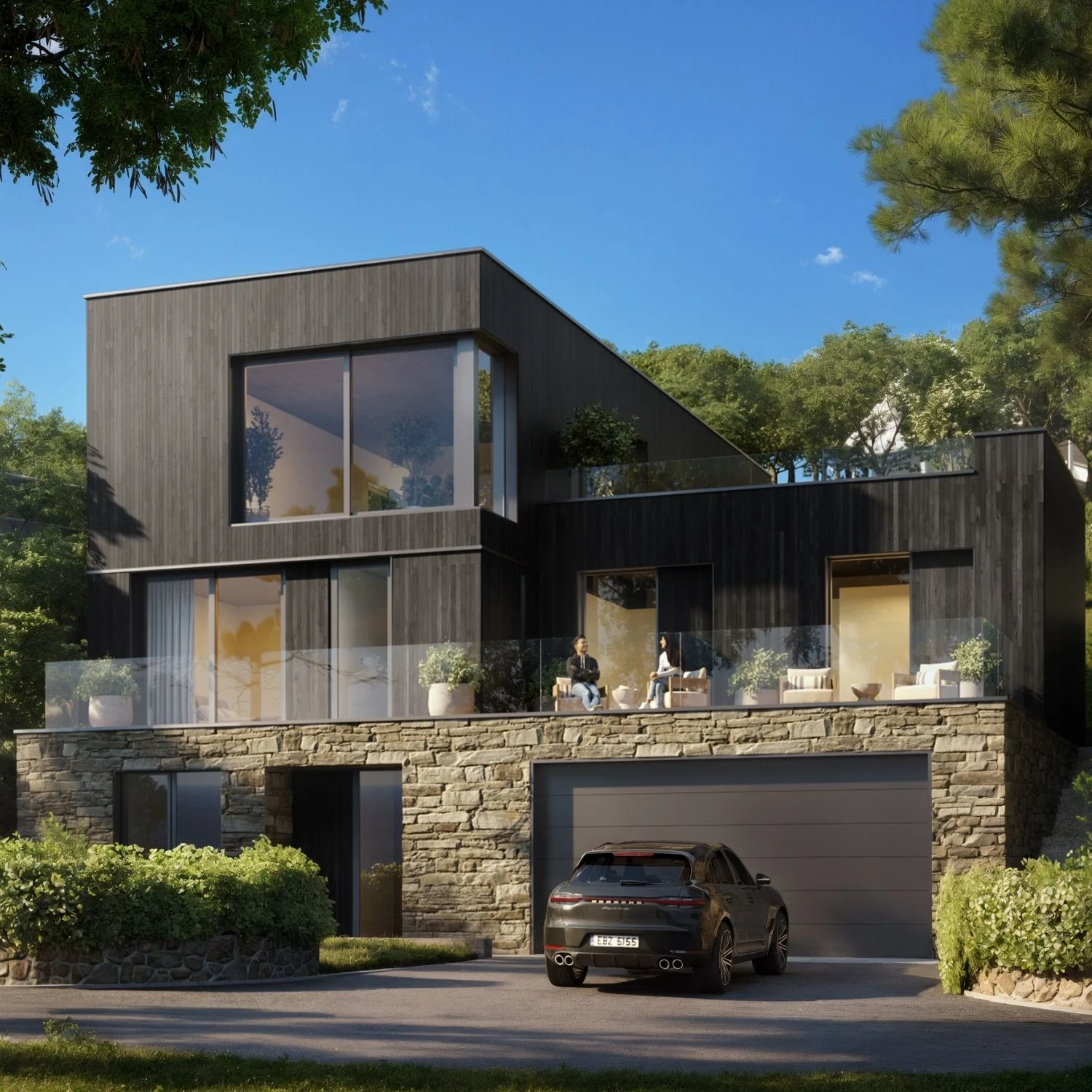Virtual Staging vs Real Staging: The Pros & Cons
Discover the best staging option for your needs: virtual staging vs. real staging. Explore the pros and cons for homeowners, developers, and realtors.

Regardless of whether you’re a homeowner, real estate developer or a realtor, if you’re looking to sell your home, staging is an unavoidable process. The whole purpose of staging is to help prospective buyers visualize how their new home might look and to highlight the best features of the home. There are two main types of home staging – virtual home staging and real staging. Which one is the best fit for your needs? Both come with their own sets of benefits and downsides, so we’ve decided to create a comprehensive guide that will answer all your questions and concerns.
In this article, we’ll go in-depth about everything you want to know about virtual staging vs real staging. We’ll explore the specifics, differences, as well as pros and cons. Let’s dive in.
What is Traditional Home Staging?
Traditional home staging usually entails hiring a professional decorator to come to your property, set up the scene, and add home decor. Unlike virtual staging, which we’ll go more in-depth about further in the article, traditional staging uses actual real-life home decor. The professional decorator, also known as a stager, comes to gauge your home, take room measurements, and even take photos to create a mood board of what decor might work for your property.
Once they plan out the design and layout, they’ll bring the furniture, accessories, and other items that will complete and improve the existing space. The whole goal is to paint a picture for prospective buyers and present a lifestyle they can’t refuse to be a part of. The decor should be staged in a way to inspire someone to buy that particular home.
In case the home you’re selling already has some furniture, the professional stages will either let you know which items to keep, and which you should remove. This doesn’t mean that you’ll have to throw away any items but instead place them in a storage unit until the home is sold.

What Is Included in Real Home Staging?
As we’ve already mentioned, traditional home staging includes enlisting the help of a professional stager who’s experienced in interior design and knows how to make the most out of any space. They usually collaborate with different furniture and home decor stores in order to provide the best options for their clients.
The whole purpose of traditional home staging is to add specific decor and other elements that will make the home seem comfortable, stylish, inviting, and attention-worthy. If done properly, prospective customers should be able to visualize what their future home will look like and not be able to refuse the offer.
However, traditional staging is much more than filling the space up with furniture. The decorator should know how to maximize each space and show off the best design and architectural features. Depending on the state of the house you’re selling, traditional home staging can only include adding a couple of elements, or replacing most furniture and decor items to ensure the best layout and design.
What Is Virtual Staging?
Most realtors and designers will argue that virtually staging properties is the best way to attract customers. Unlike traditional home staging, digital home staging entails the use of software to do what a professional stager would do during traditional staging. Usually, virtual staging is optimal for properties that are under construction,completely empty or don’t have any suitable furniture that optimizes the space and design layout.
As the name suggests, virtual staging is used to add furniture and other design elements using advanced software and professional CGI designers. The benefits of virtual staging are endless, and we’ll discuss them below as well, but it’s important to note that the main benefit of opting for virtual staging is the versatility, time-efficiency, and the ability to use the final result both for virtual house tours and client presentations.
It gives you a plethora of design options and lets you stage and edit virtually any part of the house, which is not the case with traditional home staging. The virtual staging vs real staging debate is endless, and the fact of the matter is that there’s not a one size fits all solution. Gauge the property, write down some concept ideas, and choose which staging option would be the best fit. Some properties will require real staging, while others may benefit from digital staging instead.

How to Do Virtual Staging?
Obviously, the most important thing for digital staging is hiring professionals who are experienced, good with technicalities, have a vision, and use industry-standard software. Preferably, you’re looking for someone who’s experienced in architecture, computer design, interior 3D visualization, and has access to professional tools needed to get the job done. If you’re considering virtual staging for your property, here’s what you should do:
- Provide real photos of the property – make sure to include as many angles as possible. We recommend hiring a professional photographer who knows how to showcase the property in the best way by using the best light sources and angles.
- Create a mood board – you can do this by adding certain reference photos or creating a Pinterest board so that designers know which path to take. This includes furniture, decor, room functionalities, etc.
- Floorplan – this is imperative so that designers are able to employ correct scaling and provide you with the most realistic design possible.
- Clean the space – don’t leave behind any clutter – it’s not cute and it will make the designers’ work that much harder.

What’s Included in Virtual Staging?
Like traditional staging, virtual furniture staging includes hiring a team of professionals to make the most out of your property. So, you can expect to receive a virtual tour of your home that includes optimal design elements and aims to highlight the best features of your property. It gives you more options to play around with, and you can even create a couple of different 3D interior design renderings to ensure that you’re appealing to more than one type of customer.
How Much Does Virtual Staging Cost?
Virtual home staging is much more cost-effective compared to traditional staging. When it comes to price, it depends on the size of the property, your requirements, and how much you’re willing to spend to receive the best service. Different digital visualization companies charge different fees.
This price can be influenced by the market, the current demand, and some other factors. However, an advantage of virtual staging is the fact that you only have to pay this price once, and your home will be fully decorated.
Traditional staging is more expensive because you’re basically renting furniture. So, you’ll usually be charged a flat fee for the first month, and if your property isn’t sold within that first month, you can expect to pay a couple of hundred dollars for each upcoming month that your property sits in the market.

The Pros & Cons of Traditional Home Staging
Traditional home staging has been the standard until recent years. This long tradition only proves that it still is an effective tool for selling houses. However, now that we have other options available, do real home staging pros outweigh the cons? Let’s see.
Pros:
- It provides prospective buyers with a real-life experience
- Creating an emotional connection with your buyers
- It helps with visualizing the home better
- Some customers prefer physically staged homes
Cons:
- It has fewer design options
- It’s much more expensive compared to virtual staging
- It’s time-consuming
- It requires physical work – getting and moving the furniture
- The furniture can remain at your property for a limited amount of time

The Pros & Cons of Virtual Staging
Real estate virtual staging is slowly replacing traditional staging as the new industry standard. While many are skeptical about including it in their marketing strategy, one thing’s for sure – it’s here to say. However, like everything else in life, virtual staging is not perfect and has its own set of pros, but also cons. Let’s explore them.
Pros:
- It’s cost-effective
- It’s more affordable compared to traditional staging
- It gives you a plethora of design, furniture, and layout options
- It can be used for selling the property, but also for remodeling and virtual house tours
- It doesn’t require any manual labor on your end
- You have more creative liberty
Cons:
- If not done correctly, the images can look very fake
- Not all markets allow virtual staging
- You can use it to conceal flaws and manipulate the customers
- It can give a wrong first impression

Will Virtual Staging Become the New Norm?
Due to the many benefits that come with virtual home staging, wondering whether it will become the mainstream is expected. One massively important factor that plays a role in answering this question is the recent pandemic all of us have been affected by. Due to all social distancing requirements, it is safe to say that virtual staging was the norm during the past year.
Moreover, the visualization technology has advanced so much that digital home staging looks extremely realistic. Not only is it more cost-effective and versatile, but it’s also much less time-consuming.
However, let’s not jump to conclusions and say that traditional home staging is completely dead – it’s not. It’s still a good and reliable way to improve your chances of selling the property. But, its existence is severely endangered by the expansion and many benefits of the digital visualization revolution. We’re yet to see what the future holds. But, if we were to place a bet, our money would go on virtual staging.
Closing the Deal with Virtual Staging
Virtual staging for real estate is a great way to close deals quickly. In fact, statistics show that nearly 90% of digitally staged properties were sold within the first month of the listing. So, if you’re debating whether to convert to digital staging, this is your sign to do that. Here’s how you close deals faster with virtual staging:
- Clients will be impressed by the quality of your presentation
- Versatility will let you showcase your property in multiple ways, giving you the best shot to appeal to at least one customer
- Virtual home tours will bring in an even bigger pool of customers because not everyone is able to see the property in-person
- It gives more details and ideas of how space can be used in the best way possible

Is Virtual Staging Worth It?
Yes, virtual staging is worth every hour and every penny. Not only is it more cost-effective, but it’s also the best way to showcase the convertibility of your property. The key here is to hire a team that knows what they’re doing.
At PIXREADY, we work with a team of architects and 3D interior visualization specialists to ensure the best results for our clients. We’ve helped customers sell their properties above the asking price thanks to our expertise and long experience of working in the property CGI visualization industry. We deliver quick and beautiful results with no room for error.
.png)
Founded by a group of technology, architecture, and design professionals in 2018, PIXREADY is one of the challengers empowering the 3D visualization industry and making its products and services more affordable.We are determined to assist businesses around the world to create photorealistic images of their products and ideas and enrich the experience of their clients. We focus on the details, with the highest precision in every pixel.
Latest Posts
STAY UPDATED
Get occasional emails with 3D visualization news and insights
.webp)

